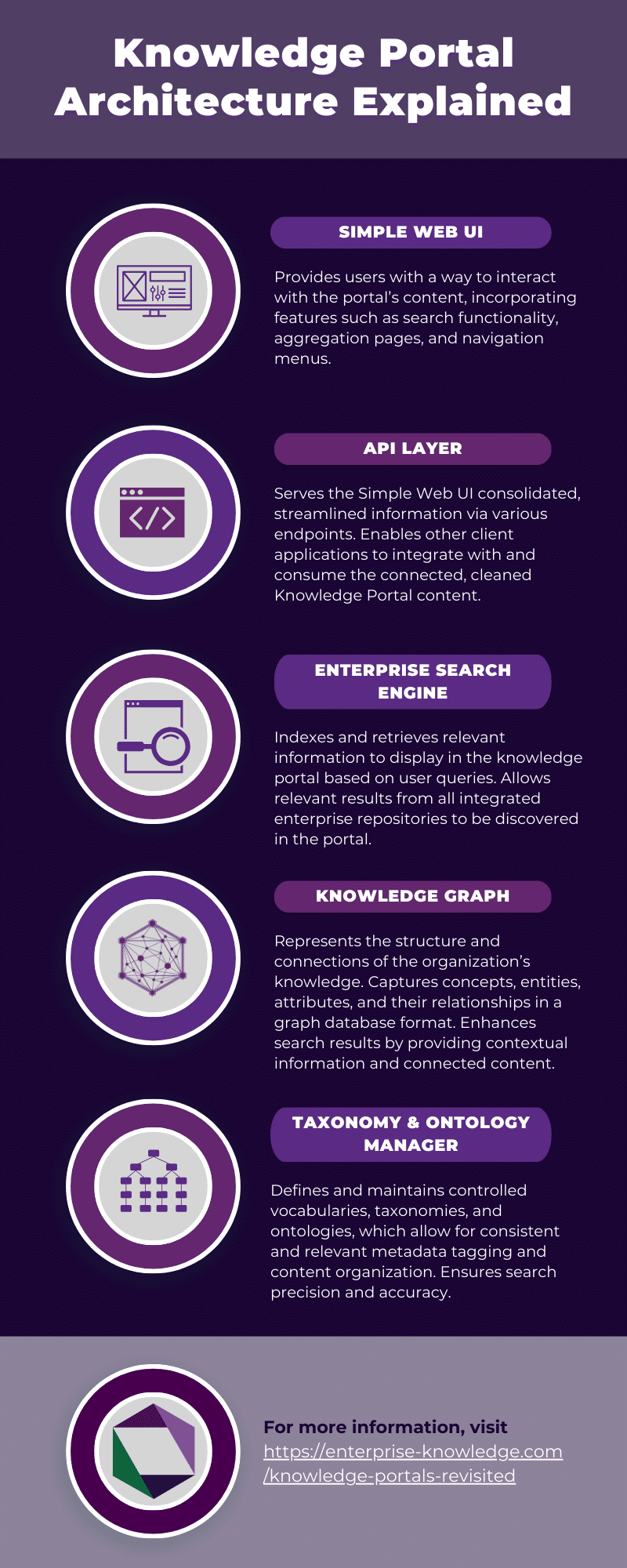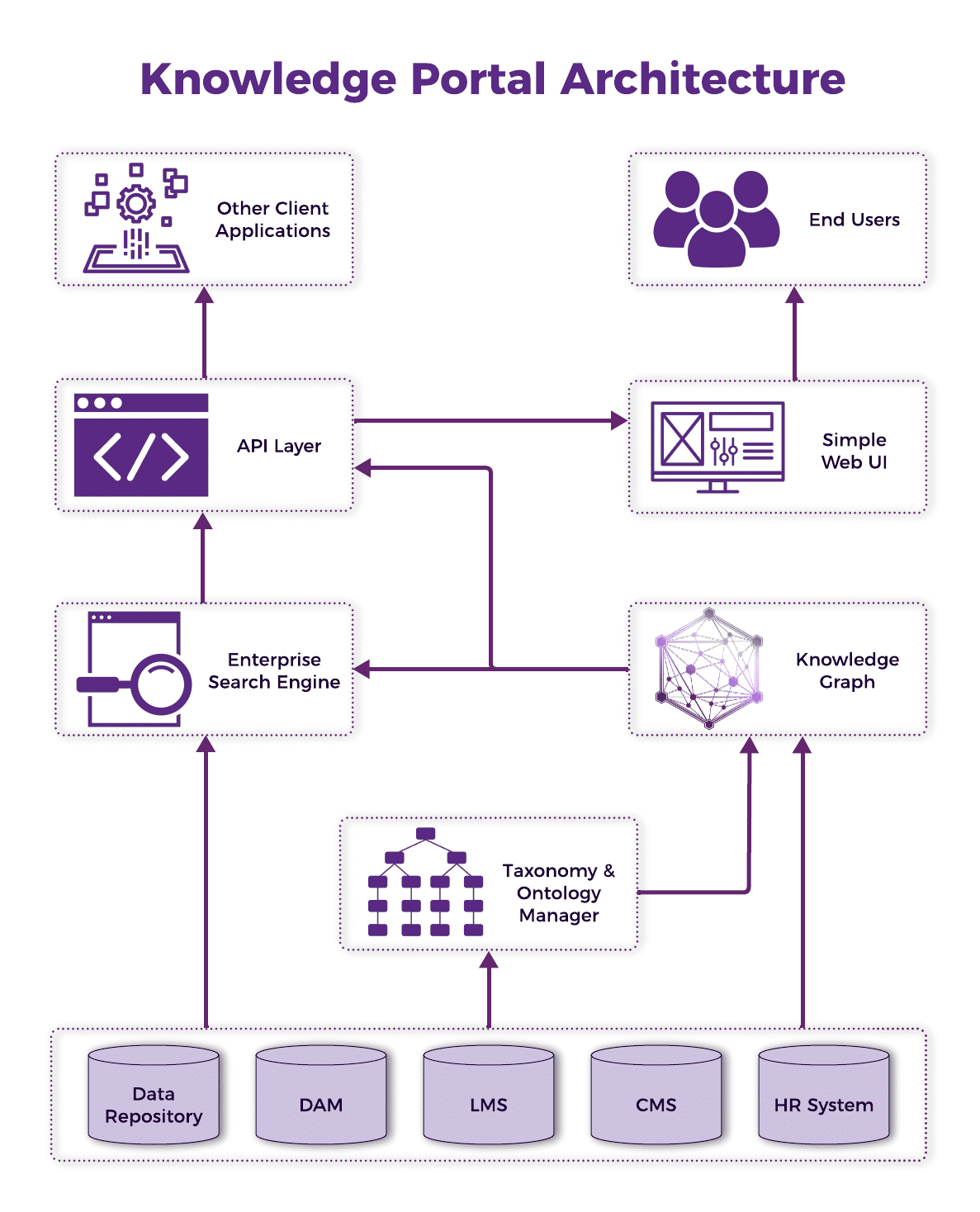In today’s data-driven world, the need for efficient knowledge management and dissemination has never been more critical. Users are faced with an overwhelming amount of content and information, and thus need an efficient, intuitive, and structured way to retrieve it. Additionally, organizational knowledge is often inconsistent, incomplete, and dispersed among various systems.
The solution? A Knowledge Portal: a dynamic and interconnected system designed to transform the way we manage, access, and leverage knowledge. This provides users with a comprehensive Enterprise 360 view of all of the information they need to successfully do their jobs. At its core, a Knowledge Portal consists of five components: Web UI, API Layer, Enterprise Search Engine, Knowledge Graph, and Taxonomy/Ontology Management System.

The diagram below displays how these five components interact within the context of an Enterprise Knowledge Portal implementation.

Collectively, these components create a unified platform, empowering both organizations and individuals to discover information, break down organizational silos, and make informed decisions.
EK has expertise in Knowledge Portal implementations, and we would love to help you take the next step on your knowledge management journey. Please contact us for more information.
Special thank you to Adam Eltarhoni for his contributions to this infographic!
